Recently, I have been hearing complaints about having websites drop out of rankings (or at least get bumped down a bit) for one particular keyword phrase, but not others. The assumption is likely that it is a penalty based on un-natural linking activity for that keyword phrase.
If this is happening, how can you prevent your top keyword phrase from getting slapped by Google? Vary your anchor text of course.
If you’d like to know who’s ranking for your keyword phrase organically, as well as some related terms that have high CPC value, check out SEMRush and search for your keyword.
Once you have your primary keyword phrase, use the following to get ideas on other phrases that you might want to rank for, or at least include in your mix of anchor text.
1. Google Suggest
As mentioned above, Google Suggest provides a nice selection of related keyword terms to your own. Simply start typing in your phrase and it will do the rest for you.
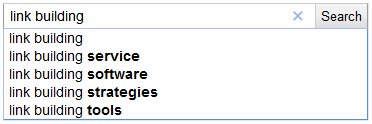 And it’s not a bad idea to branch out and think of other phrases to use as anchor text. Someone may enter your targeted keyword phrase and get distracted by some of the suggestions that pop up in the search, more specific terms you may not be ranking for.
And it’s not a bad idea to branch out and think of other phrases to use as anchor text. Someone may enter your targeted keyword phrase and get distracted by some of the suggestions that pop up in the search, more specific terms you may not be ranking for.
2. Google “Searches related to” Links
A little less popular in the scope of things, considering the positioning, but Google also gives searchers who haven’t found what they are looking for on the first page additional popular searches related to your search term. These may provide additional ideas for keyword anchor text phrases.
 3. Google Insights
3. Google Insights
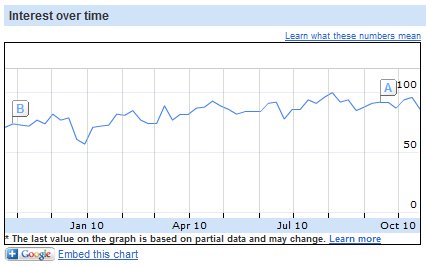
Below this, you will see your keyword based on regional interest, where you can drill down into specific locations. For example, in the map below, you can see that the top states interested in link building.
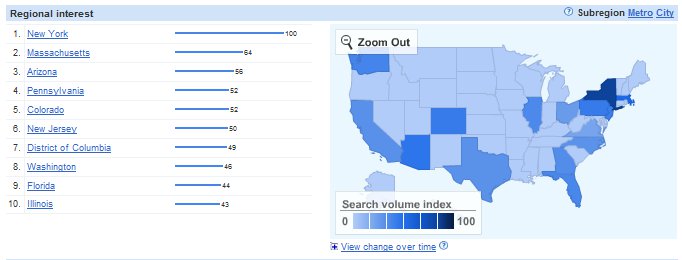 After the map, based on the region you are viewing, you will see the top searches within the time frame specified related to your keyword phrase, as well as rising searches for new trends that may be emerging in your niche.
After the map, based on the region you are viewing, you will see the top searches within the time frame specified related to your keyword phrase, as well as rising searches for new trends that may be emerging in your niche.
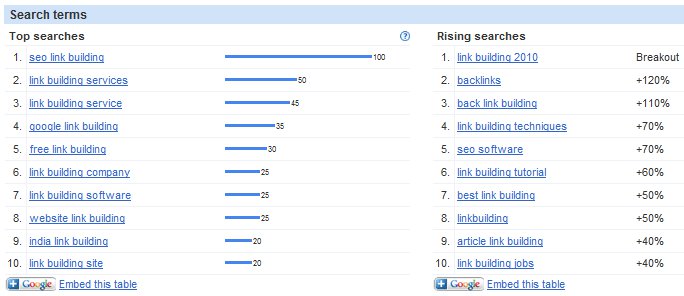
4. Commercial Intent
Microsoft adCenter Labs offers a tool for detecting online commercial intention that will tell you whether a term is more likely to be searched for based on informational value or actual intent to make a commercial transaction.
This tool can help you gauge whether some of the additional phrases you are looking to build links for will be likely to result in someone looking to purchase your products or your services.
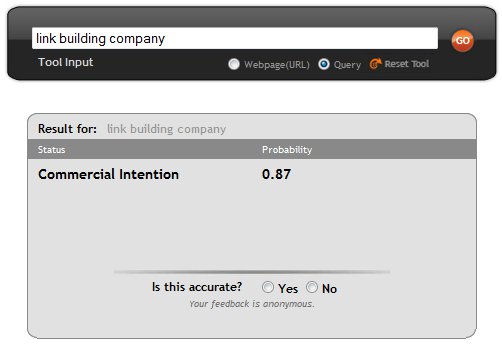
As you can see from the above example, “link building company” has a commercial intent probability of .87, whereas “link building strategy” has a non-commercial intent of .62. You can also offer your feedback about the tool’s accuracy if you feel the result is skewed.
Your Anchor Text Strategy
Have you ever been sandboxed for over-linking to one phrase? How do you vary your anchor text to make your link building campaign look as natural as possible?
source from:searchenginejournal.com
If this is happening, how can you prevent your top keyword phrase from getting slapped by Google? Vary your anchor text of course.
Natural Anchor Text
Google likes natural, and, if you think about it, people who are not SEO’s are going to link to a variety of things that you should be using on occasion too, including:- Website Name or URL
- Company or Brand Name
- Click Here – as generic as it may be, it also entices more people to click on the link, so while the SEO value may be low, the CTR will be rewarding.
Anchor Text Research Tools
First off, if you’re completely stumped, you can start with Open Site Explorer to see the anchor text distribution that your competitors use. All you need is a free account with SEOmoz to see the top 20 keyword phrases used.If you’d like to know who’s ranking for your keyword phrase organically, as well as some related terms that have high CPC value, check out SEMRush and search for your keyword.
Once you have your primary keyword phrase, use the following to get ideas on other phrases that you might want to rank for, or at least include in your mix of anchor text.
1. Google Suggest
As mentioned above, Google Suggest provides a nice selection of related keyword terms to your own. Simply start typing in your phrase and it will do the rest for you.

2. Google “Searches related to” Links
A little less popular in the scope of things, considering the positioning, but Google also gives searchers who haven’t found what they are looking for on the first page additional popular searches related to your search term. These may provide additional ideas for keyword anchor text phrases.

If you would like to dig into trends related to your keyword, take a look at Google Insights. It will show you the trending popularity of a search term, which you can view within a time period of 7, 30, or 90 days, 12 months, a particular year, or the default of 2004 to the present.

Below this, you will see your keyword based on regional interest, where you can drill down into specific locations. For example, in the map below, you can see that the top states interested in link building.


4. Commercial Intent
Microsoft adCenter Labs offers a tool for detecting online commercial intention that will tell you whether a term is more likely to be searched for based on informational value or actual intent to make a commercial transaction.
This tool can help you gauge whether some of the additional phrases you are looking to build links for will be likely to result in someone looking to purchase your products or your services.

As you can see from the above example, “link building company” has a commercial intent probability of .87, whereas “link building strategy” has a non-commercial intent of .62. You can also offer your feedback about the tool’s accuracy if you feel the result is skewed.
Your Anchor Text Strategy
Have you ever been sandboxed for over-linking to one phrase? How do you vary your anchor text to make your link building campaign look as natural as possible?
source from:searchenginejournal.com
No comments:
Post a Comment